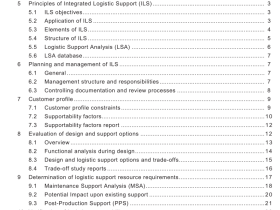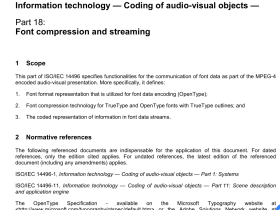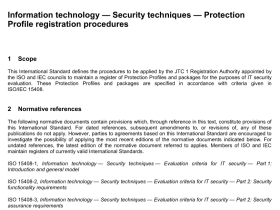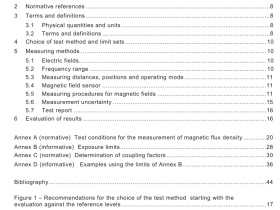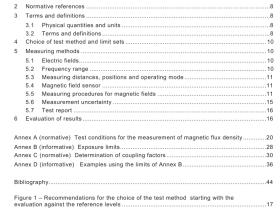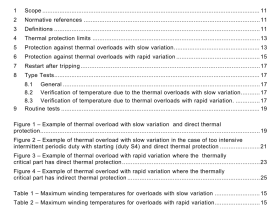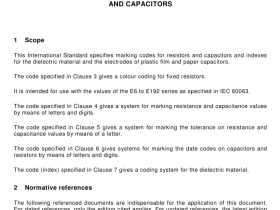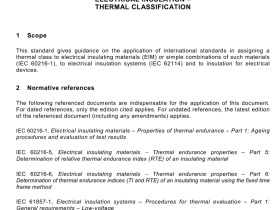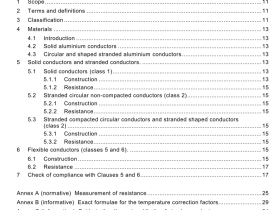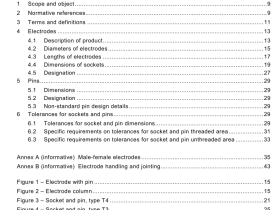IEC 62356-2 pdf download
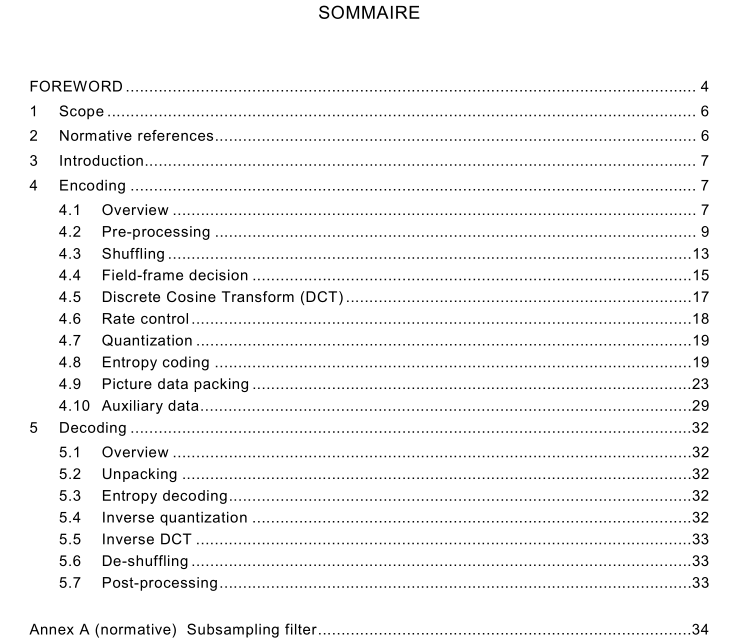
IEC 62356-2 pdf download Video recording – 12,65 mm type D-11 format – Part 2: Picture compression and data stream
1 Scope
This International Standard specifies the compression of a high-definition source format to a dual-channel packetized data stream format which is suitable for recording on disc and tape storage devices including the Type D-1 1 tape recorder. The specification includes a number of basic packetizing operations including the shuffling of the source data prior to compression, both to aid compression performance and to allow error concealment processing in the decoder. The standard also includes the processes required to decode the compressed Type D-1 1 packetized data format into a high-definition output signal.
This standard supports high-definition source formats using 1 920 × 1 080 pixels and the sampling structures as specified in SMPTE 274M and RP 21 1 at the following picture rates:
• 24/1 ,001 /PsF;
• 24/PsF;
• 25/PsF;
• 30/1 ,001 /PsF;
• 50/I;
• 60/1 ,001 /I
where ‘PsF’ indicates Progressive segmented Frame and ‘I’ indicates Interlaced.
The data packet format specified by this standard is used as the source data stream for the associated document which maps this Type D-1 1 packetized data-stream format together with AES3 data over SDTI.
2 Normative references
The following referenced documents are indispensable for the application of this document. For dated references, only the edition cited applies. For undated references, the latest edition of the referenced document (including any amendments) applies.
3 Introduction
This standard specifies the encoding and decoding of high-definition source formats via compression into a bit rate in the range 1 1 2~1 40Mb/s for recording on a Type D-1 1 digital tape recorder. The recorded bit rate is related to the source picture rate according to Table 1 .
In common with other compression systems, the Type D-1 1 encoding process uses intra- frame coding (i.e. the coding is bound by the frame period) using the Discrete Cosine Transform (DCT) to provide the data de-correlation required for efficient compression. The coefficients are quantized and variable length coded (VLC) to produce the basic output data format. T
he source pictures are subsampled prior to compression coding. This reduces the number of coded pixels and allows the number of bits-per-pixel value to be raised in proportion. The luminance source sampling grid of 1 920 × 1 080 pixels is reduced to 1 440 × 1 080 pixels. For each chrominance channel, the source sampling grid of 960 × 1 080 pixels is reduced to 480 × 1 080 pixels. In the decoder, the output pixel sample grid is restored back to the source format of 1 920 × 1 080 pixels by interpolation following the compression decoding process.
The compressed data format specified by the output of the compression encoder is of a form which allows direct mapping into the basic block structure as defined in the Type D-1 1 digital recorder document.
